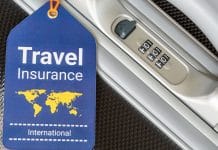As a small business owner, you know that timing is everything. Whether you’re facing a seasonal revenue dip, an unexpected equipment failure, or a golden opportunity to expand, having access to capital when you need it can make or break your success. That’s where a business line of credit comes in—your financial safety net and growth accelerator rolled into one powerful tool.
Unlike traditional loans that drop a lump sum in your lap with a rigid repayment schedule, a business line of credit offers the flexibility modern entrepreneurs need. It’s like having a financial Swiss Army knife in your back pocket—ready whenever you need it.
What Is a Business Line of Credit and How Does It Work?
A business line of credit is a revolving credit facility that provides access to a predetermined amount of capital. You can draw from it as needed and repay it at your pace—interest is charged only on the amount you use.
For example, if you have a $100,000 credit line and withdraw $20,000 for inventory management, you only pay interest on that $20,000. As you repay the funds, the full limit becomes available again—offering unparalleled flexibility for short-term and recurring capital needs.
Business Line of Credit vs. Term Loan
Here’s how a line of credit compares to a traditional term loan:
| Feature | Business Line of Credit | Term Loan |
| Funding Type | Revolving | One-time lump sum |
| Repayment | Only on funds drawn | Fixed, monthly installments |
| Best Use | Short-term, working capital | Long-term investments |
| Interest Charges | On withdrawn amount | On entire loan amount |
| Flexibility | High | Low |
| Approval Speed | Faster (24–72 hrs for online) | Slower, more paperwork |
This makes business lines of credit ideal for ongoing needs like managing seasonal dips or bridging cash flow gaps—while term loans are better for major equipment or real estate purchases.
Secured vs. Unsecured Lines of Credit
There are two main types:
Secured Line of Credit
- Backed by collateral (equipment, inventory, or accounts receivable)
- Pros: Lower rates, higher limits
- Cons: Risk of losing assets
Unsecured Line of Credit
- No collateral required, but often includes a personal guarantee
- Pros: Fast approval, fewer asset restrictions
- Cons: Higher interest rates, stricter credit criteria
Online lenders often offer unsecured options with streamlined approvals, making them popular among side hustle entrepreneurs or early-stage service-based businesses.
Who Qualifies for a Business Line of Credit?
Lenders typically look at:
- Time in Business: Minimum 6–24 months
- Annual Revenue: Often $50,000–$250,000+
- Credit Score: 600+ for online lenders, 680+ for banks
- Business Performance: Healthy cash flow, low debt
- Industry Type: Some industries are considered riskier
Working on your business credit profile and paying bills on time can increase your odds of approval and unlock better rates.
The Application Process: What to Expect
Documents Often Required:
- Business and personal tax returns
- Bank statements (3–6 months)
- Financial statements (P&L, balance sheet)
- Business registration/license
- Owner identification
Underwriting Factors Include:
- Credit scores
- Cash flow and bank activity
- Debt-service coverage
- Collateral (if applicable)
- Business sector stability
Traditional banks require more documentation and time, while online lenders use algorithmic models and real-time revenue tracking to speed up approvals.
How to Use a Business Line of Credit Strategically
Smart Uses:
- Seasonal inventory: Retailers use it to stock before busy periods
- Bridge financing: Fill short gaps between receivables
- Emergency repairs: Fix equipment quickly
- Payroll protection: Maintain staff during dips
- Marketing: Launch time-sensitive campaigns
- Vendor discounts: Bulk buy for better margins
Avoid Using For:
- Startup funding (better suited to small business grants or term loans)
- Long-term asset purchases
- Recurring negative cash flow
- Personal expenses
True Cost: Rates and Fees to Know
Typical interest rates range from 8–40% APR depending on your profile and lender.
Additional fees may include:
- Origination fees (0.5%–5%)
- Annual maintenance fees ($25–$500)
- Draw fees (1%–3%)
- Late payment penalties
- Prepayment penalties (rare among modern lenders)
If you’re managing high-yield savings, maintaining cash reserves to cover interest and fees can be a smart strategy.
Where to Get a Business Line of Credit
Traditional Banks
- Best for: Established businesses with strong financials
- Pros: Lowest rates, high limits
- Cons: Lengthy approval process, more paperwork
Credit Unions
- Best for: Local businesses and credit union members
- Pros: Personal service, competitive rates
- Cons: Limited branch networks and eligibility
Online Lenders
- Best for: Fast funding or limited credit
- Pros: Quick approvals, flexible terms
- Cons: Higher rates, shorter terms
SBA-Backed Options
- Best for: Qualified businesses seeking great terms
- Pros: Government guarantees reduce risk
- Cons: Complex application process, longer wait times
Maintaining and Building Strong Credit
Strong business credit equals better financing options down the road. Like maintaining a student loan refinancing profile, good financial habits lead to long-term savings.
Tips:
- Pay vendors on time
- Keep utilization under 30%
- Monitor reports from D&B, Experian, and Equifax
- Keep personal and business accounts separate
- Ask lenders for limit increases as your business grows
Managing Your Line of Credit Responsibly
- Stay below 30% usage to maintain high credit scores
- Automate payments to avoid late fees
- Review statements monthly for accuracy
- Request limit reviews as revenue grows
- Avoid cash advances unless absolutely necessary
A line of credit should support operations—not become a crutch. If you’re consistently short on cash, revisit your cash flow management plan.
Real-World Success Stories
- Sarah, a construction company owner, used a $150,000 line to bridge project timelines—growing revenue by 35% in one year.
- Marcus, a retail shop owner, leveraged $75,000 to prepare for holiday inventory. His proactive planning increased holiday sales by 22%.
Conclusion: Is a Business Line of Credit Right for You?
If you’re running a stable or growing business and want flexible capital to navigate short-term expenses or seize unexpected growth opportunities, a business line of credit could be your ideal financial solution.
But remember: it’s not a fix for unprofitable models or chronic shortfalls. Used wisely, it can be the difference between stagnation and strategic expansion.
Take Control of Your Business Capital Strategy
Whether you’re an e-commerce entrepreneur, service provider, or seasoned manufacturer, having access to on-demand capital can give you a competitive edge.
Explore more funding guides, business credit tools, and growth strategies at Wealthopedia—your trusted source for financial clarity and small business success.
Have experience using a line of credit? Drop your thoughts in the comments or schedule a free consultation to evaluate which funding option best fits your business.

























